At the center of the Lands Between is Leyndell, the home of the Erdtree, and the most important place in all of Elden Ring. At the base of the massive tree, Marika built the seat of her power. Of all the places in the Lands Between, Leyndell probably remains in the best shape, with its walls still standing and knights waiting within.
Once you have a few Great Runes, your journey inevitably takes you to Leyndell as you attempt to claim the Elden Ring and become Elden Lord. But there are other powers who still stand in your way--others who still wish to take the throne.
Your trip into Leyndell puts you closer to your goal than you've ever been, but there are also a few major revelations to be found here, as well. As we delve into the Erdtree capital, as always, there are spoilers within, although these are probably the biggest yet, with the greatest and weirdest lore implications for the overall story of the game.
Here's what's happening as you explore Leyndell and try to lay claim on the title of Elden Lord.
More deep dives into Elden Ring's story
- The Lore and History of the Lands Between
- What Happens in Elden Ring? The Game's Story, Part 1: Limgrave
- What Happens in Elden Ring? The Game's Story, Part 2: Liurnia of the Lakes
- What Happens in Elden Ring? The Game's Story, Part 3: Caelid
- What Happens in Elden Ring? The Game's Story, Part 4: Mt. Gelmir and Volcano Manor
- What Happens in Elden Ring? The Game's Story, Part 6: Mountaintops of the Giants
- What Happens in Elden Ring? The Game's Story, Part 7: Castle Sol and the Consecrated Snowfield
- What Happens in Elden Ring? The Game's Story, Part 8: Miquella's Haligtree
- What Happens In Elden Ring? The Game's Story, Part 9: Eternal Cities, Deeproot Depths, And Mohg
- What Happens In Elden Ring? The Game's Story, Part 10: Crumbling Farum Azula
- What Happens In Elden Ring? The Game's Story, Part 11: Leyndell, Ashen Capital
- What Happens In Elden Ring? The Game's Story, Part 12: Becoming Elden Lord
- The Frenzied Flame and the Game's Bleakest Ending, Explained
Traversing Altus
The journey to Leyndell first takes you across the Altus countryside. Though the city and its outskirts are largely intact, there's a lot to pay attention to in the surrounding area as you make your way toward it, and the Shattering has definitely not spared this place.
First, if you made your way up through the Ruin-Strewn Precipice, you were likely accosted by a dragon before you even really entered the Altus Plateau proper. Dragons are all over the place in the Lands Between, but they have a big connection to Leyndell in particular that we'll get into more a little later. The history and lore of Elden Ring includes a war between the Golden Order and the dragons, but at least one, Fortissax, was impressed by Marika's demigod son, Godwyn the Golden, and became friends with him. The dragon you face here, Lansseax, was sister to Fortissax and seems to also have been friendly to the humans and the Golden Order. In fact, dragons are a big part of some of Leyndell's culture, and a lot of that has to do with Lansseax--so the dragon showing up to attack you as soon as you show up on Altus Plateau makes some sense, from that perspective.
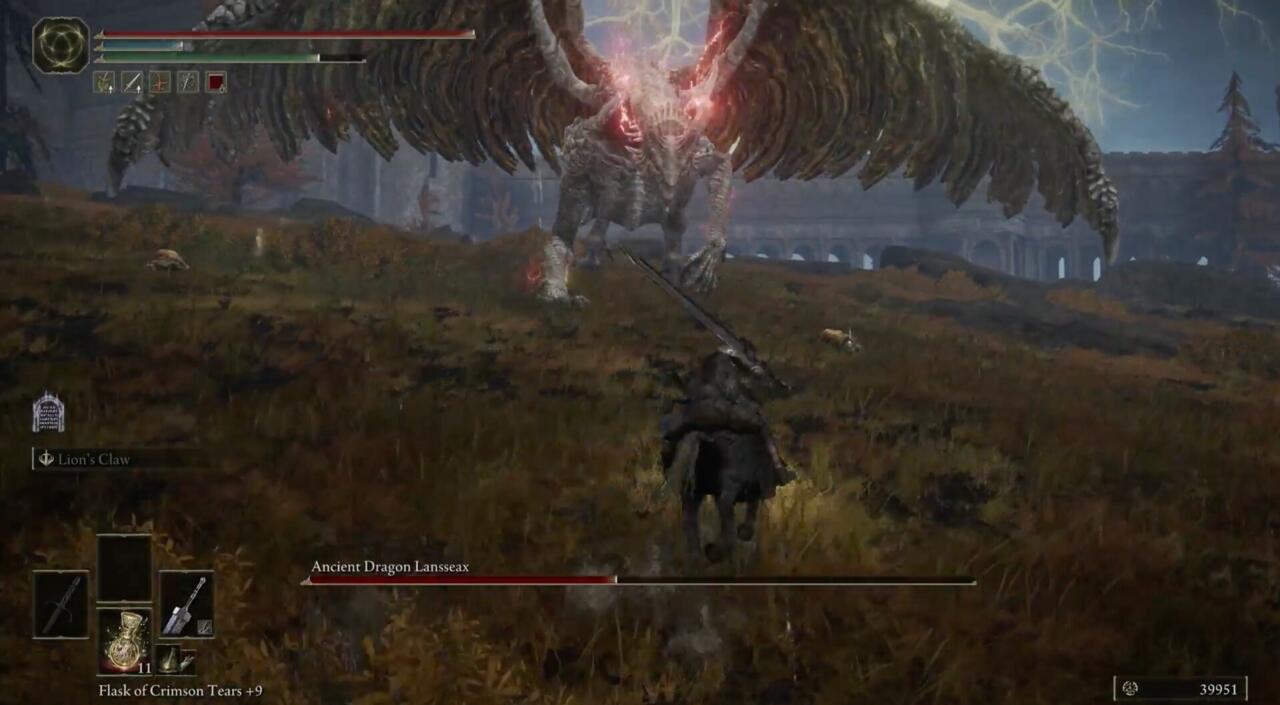
Before you head to the capital, you can explore some of the land around it, which presents some interesting information. A bridge that heads north over a darkened forest has been destroyed, possibly during the Shattering, given you can find the convoys you've seen throughout the Lands Between crushed among the wreckage. The forest is populated by death-spewing, worm-faced creatures, and is the site of several sets of ruins. It appears that Leyndell has more or less abandoned this area, and with the bridge destroyed, nobody from the capital is visiting the area to the north.
The lands at the north end of the plateau are dotted with windmills, and if you make your way there, you'll discover some... interesting people. The Windmill Pastures surrounding them flank the village of Dominula. All through this area, you'll find strange women dancing and laughing contentedly, their faces stained with blood. They're not hostile unless you attack them, for the most part, but if you investigate the area, you'll find evidence of quite a few murders and a ghost that begs someone not to skin him.
It's tough to say anything for sure about Dominula, but there's enough information floating around to speculate. At the north end of the village, at its highest point, you'll fight a Godskin Apostle boss, and given the flower festival feel of the village and the information you can read on the clothes and weapons of the women there, the whole place has a religious feel--but a religion at odds with the Golden Order. The women seem to be celebrating in Dominula, wearing festival garb that suggests that part of the rites of that festival include sacrificing people and skinning them. With the Godskin Apostle at hand, we can guess that these may well be humans who subscribe to an older religion, before the advent of Marika's Golden Order. As to why they're dancing endlessly, it's tougher to say, although YouTubers KitTales and Flex have a video with some good theories.
For my part, I think Dominula represents another religious minority operating in the Lands Between, and shows that there are people who don't subscribe to the Golden Order, even in Leyndell's backyard. It's pretty good evidence that, during the Shattering or even before it, there were dissenters, and Marika's hold on the Lands Between was not as complete as we might have been led to believe. It also shows that some of the factions and religions of the land don't rely on the various demigods to drive them.
While the area to the north is more ruinous, the path into Leyndell is in good shape, and well-protected by soldiers and even a giant gargoyle statue. Once you get past the soldiers blocking your entry, a familiar face even shows up to challenge you: Margit, the Fell Omen. The first boss you fought at Stormveil Castle here takes over a commoner and is a little more easily defeated, but that provides some important information about the character himself. The Margit you fought at Stormveil seems to have been a projection, just like this one. It's a puppet, and someone else is pulling its strings, using it to try to stop Tarnished on their journey.
To finally make your way into Leyndell, you have to fight and kill a Tree Sentinel, one of the mounted knights loyal to the Golden Order and the Erdtree, to find a side entrance into the walls. Inside, you'll find the city in pretty good shape, but with people who are sitting around, waiting for orders or for war to come to the city. A lot of them don't seem to have a lot to do.
Heralds and loyalists of the Golden Order
The first people you see as you enter Leyndell are Oracle Envoys, horn-bearing people wearing big white hats. Descriptions on the items you can get from Oracle Envoys call them "monstrous" and suggests they appear to blow their horns to herald the coming of a new god, or a new age. As you enter Leyndell, then, you might be approaching one of the demigods closest to claiming the Elden Ring: Morgott, called both the Omen King and the Grace-Given Lord, son of Marika and Godfrey.

Scattered throughout the city are the kinds of people loyal to the Erdtree you've already found throughout the Lands Between. You'll also find interesting enemies in the Perfumers, who you might have seen before now popping up here and there in Altus Plateau. These formerly were apothecaries, dealing in chemistry and medicine, and at least one famous Perfumer, Tricia, tried to heal the downtrodden of the Lands Between, like Omen and the winged Misbegotten creatures who were forced to be servants and slaves. But the Perfumers weren't all necessarily benevolent--Rollo, the first Omenkiller, had previously been a Perfumer. During the Shattering, the Perfumers were pressed into military service, trading healing potions for poisons.
Traveling through the city, you get a bit of a sense of its history and how it has developed since the Shattering. First, right in the center of town, is the massive corpse of a dragon. This, it seems, is Gransax, and its attack on the capital marked the only time in its history when its walls fell. The dragon was eventually defeated, of course, and the response of the Golden Order was to wage war on the rest of the dragons, led by Godwyn. As with the other opponents Marika and her children faced, the dragons were eventually defeated, although as mentioned before, some of them allied themselves with Godwyn and the royal family during the course of the conflict.
A relationship with dragons, in some form or another, had a pretty profound influence on Leyndell. There are knights there that wield powers usually reserved for dragons, and lore describes the city as home to a dragon cult--although, in the lore, it's described as "ancient," so it may well be that the cult existed in the capital before the war in which Godwyn befriended some. Lansseax, the dragon we talked about earlier, was said to have taken on a human form and served as a priestess for that dragon cult, so it might be that some of the people of the Altus Plateau worshiped the dragons before the Golden Order showed up.
The dragon situation is a bit hazy, if we're being honest. Later in the game, you'll travel to a floating, destroyed mausoleum called Crumbling Farum Azula, where you can find Dragonlord Placidusax--who was, apparently, Elden Lord in the time before the Erdtree. The dragons apparently had a god of their own, who "fled," so it would follow that people of the Lands Between might have worshiped them the way they worship Marika and the Golden Order. If that's the case, the dragon cult in the capital could easily have been there before Leyndell was the seat of Marika's power, and her taking of it might have been what prompted the dragons to attack in the first place.
In any event, however, the dragons mostly lost, just like everyone else who went up against Marika's war machine.
Hidden Omens
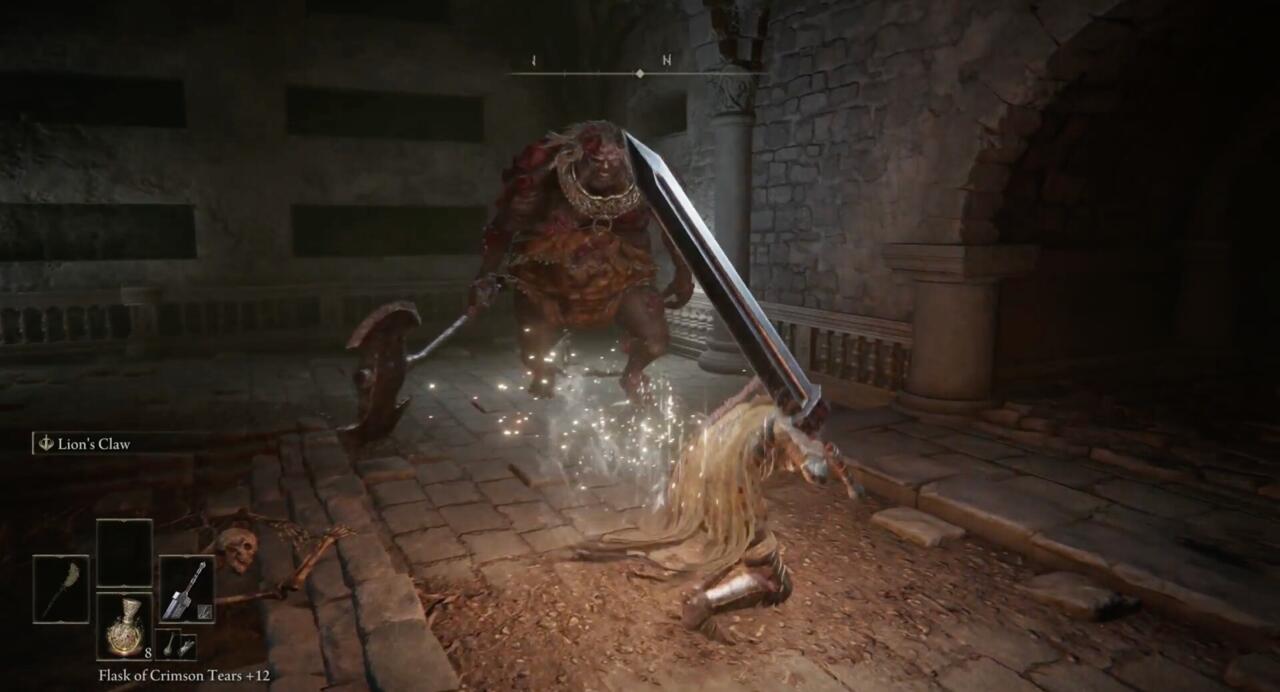
The streets of Leyndell are pretty vast, but there's more hidden beneath the surface. There's a huge underground sewer system under the city, which you can travel down into and explore. While Leyndell is clean, white, and gold above ground, its secrets are kept in the darkness below.
Descend into the depths and you'll eventually find a bunch of Omen enemies, with items that explain exactly why they're there. Omens are seen as impure--at least under the current regime--and most Omen babies have the horns that grow all over their bodies removed soon after they're born. Most of the time, this procedure kills the babies. As is often the case, however, royals don't follow the same rules as everyone else. Highborn Omen babies of the capital don’t have their horns removed; they're imprisoned beneath the city in the sewers and gaols within.
The items you find related to the Omens suggest that the powers that be had no problem employing them when they were useful. Some of the Omen carry weapons that would have allowed them to fight in the wars Marika waged around the Lands Between--although, as those weapon descriptions note, the Golden Order always had a contingency plan to make sure the powerful Omen never got out of line.
Marika and Godfrey's own children, Morgott and Mohg, were among the Omen imprisoned beneath Leyndell. In fact, if you go deep enough, you'll be able to battle against Mohg, the Omen, who blocks off the path to an even deeper portion of the sewers. This doesn't seem to be the real Mohg, however, but another projection; he stands before a seal that blocks your path into another section of the sewers, and the route to the Three Fingers, the envoys of the Frenzied Flame. That's a whole other discussion (which you can read here), but suffice to say, this is where Mohg and Morgott grew up, and where Mohg became the person he is when you finally run across him--more on him in a future part of this series.
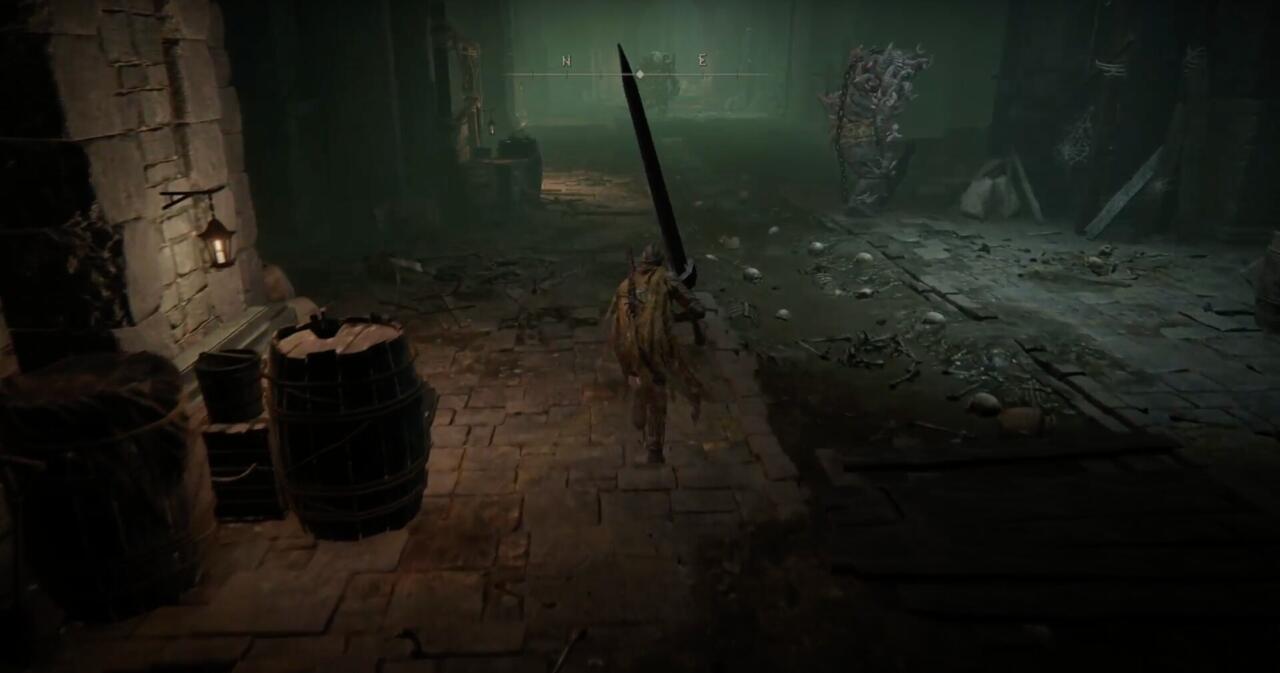
As for Morgott, he also was apparently hidden in the sewers so that he wouldn't be killed for his Omen status. But the experience of imprisonment drastically differed for the two brothers. While Mohg was driven to worship something other than the Greater Will and the Golden Order, Morgott would double down on his family, in spite of everything, and he's a major influence within Leyndell.
The path to the throne
Making your way up to the Erdtree takes you through Marika's palace. Here, your path up to the Erdtree is barred in interesting ways, both by the architecture, which requires you to climb out onto the tree itself to advance, and by the golden spirit of Godfrey, First Elden Lord. This isn't actually Godfrey that you're facing, but like the Margit projections or the Rennala spell, it's something more of an imitation. That doesn't mean it isn't powerful, though, and one has to wonder if this is another of Morgott's defenses to keep Tarnished from reaching the Erdtree above.
Beyond Godfrey is a section of the palace that's one of the most interesting, although what it all means isn't exactly clear. You'll find the walkways here littered with the bodies of Finger Reader Crones. And waiting at the end of the path is a Black Knife Assassin.
This whole area is strange, perhaps giving a hint about the split between the Golden Order and the Two Fingers in the past, or perhaps showing Morgott's moves throughout the Lands Between to shore up his own power. The Finger Reader Crones throughout the world give you information about where you're going and what you might find there, and directly or indirectly, they lead you toward Great Runes. The chief of these is Enia in the Roundtable Hold, who is pretty direct in telling you what you need to do and aiding you on your journey. Though we're speculating here, what feels like the likeliest explanation is that Morgott has been rounding up and killing these crones as part of his continuing campaign to frustrate Tarnished who are attempting to become Elden Lord; the less information those Tarnished have, the tougher their path to Leyndell will be.
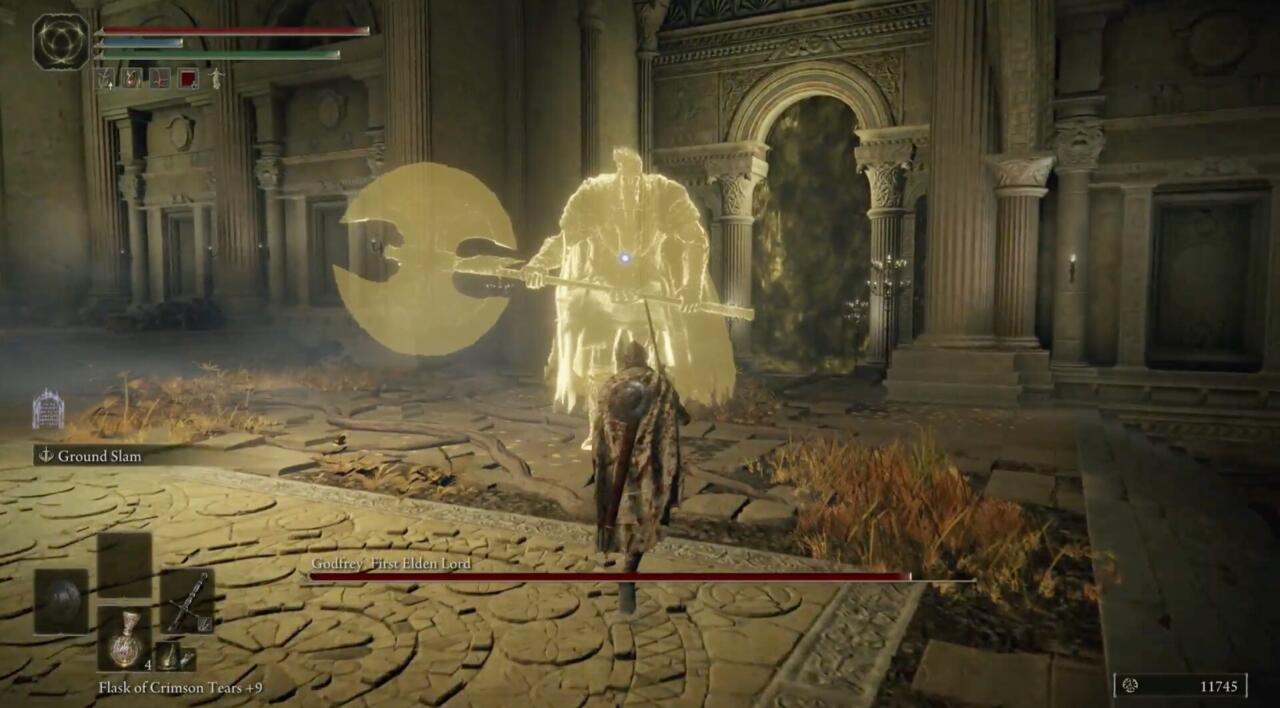
To speculate further, though, it's also possible that this could have been a move by the Golden Order against the Two Fingers, made earlier by Marika. Lore throughout the game hints in the direction that Marika may have grown fed-up with her role as an extension of the Greater Will, a god as named by the Two Fingers. The Black Knife Assassins are described as having ties to Marika, which suggests she might even have had a part in the assassination of her son, Godwyn. If Marika was cutting ties with the Two Fingers and trying to shake off the control of the Greater Will, employing the Black Knives to take out the Finger Reader Crones could seriously hamper the Two Fingers' influence. After all, they can't talk, and need the crones to interpret their movements.
The bodies of all the crones are definitely, pointedly telling us something, and whether it was during the time of Marika or under the order of Morgott, we can see that the current Golden Order has shifted out of alignment with the Two Fingers and the Greater Will. But if Morgott was responsible, the title given to him by Sir Gideon Ofnir might be a little misleading.
The Grace-Given Lord
Despite being an Omen, we find out that the true lord of Leyndell, as it stands post-Shattering, is Morgott. He may mostly hide himself from the public, but at the moment, he's the leader of the capital's military and the most senior of Marika's royal lineage. The "Omen King" is possibly the most powerful political leader in the Lands Between, with the strongest army and the strongest walls protecting him.
When you meet Morgott, you realize he looks exactly like Margit, and the situation with the Fell Omen starts to make more sense. Morgott seemingly stayed loyal to his family, despite being shunned and imprisoned as an Omen. His loyalty, it appears, was rewarded, allowing him to fight for the Golden Order as the champion known as the Fell Omen, maybe under an assumed name to hide his identity (although "Margit" and "Morgott" don't really sound all that different--maybe Margit is just the way soldiers and commoners pronounced the name, unaware they were in the presence of royalty). The Fell Omen also once led the Night's Cavalry, the powerful mounted knights you find riding around at night throughout the Lands Between. So it seems that Morgott was allowed to fight Marika's wars, even as an Omen, and he was a fierce contender.
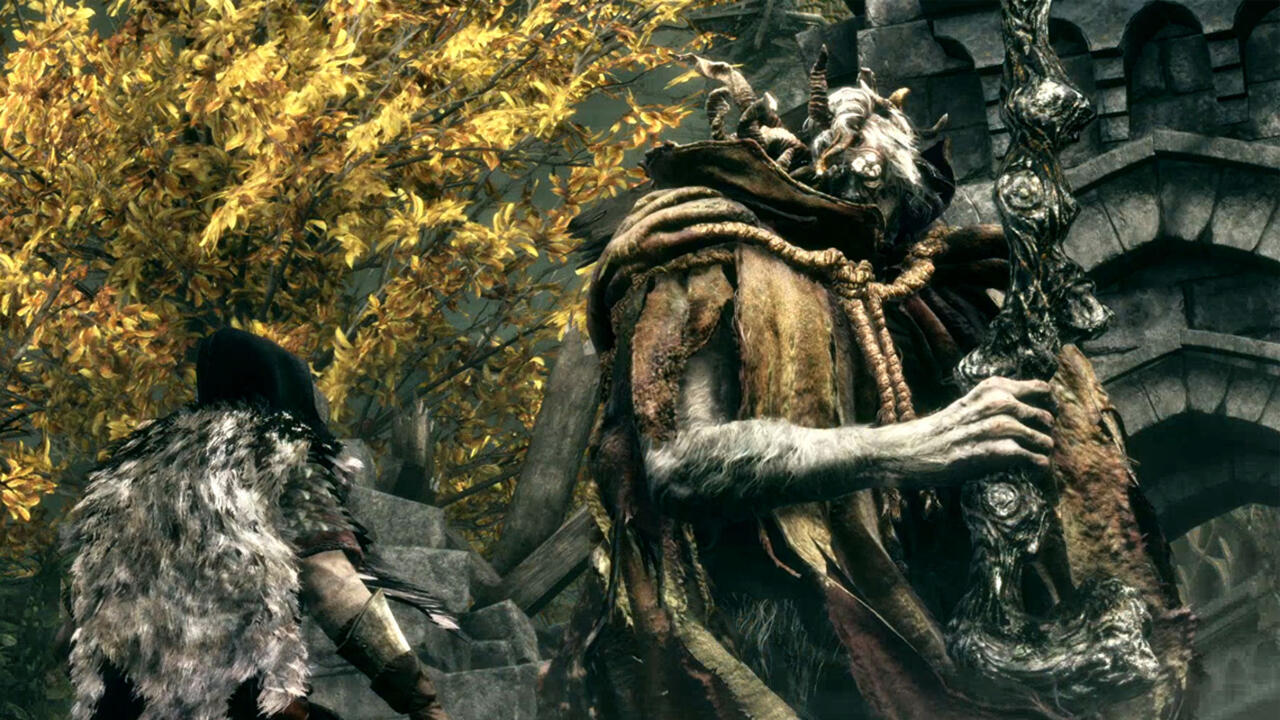
Having run up against Margit on two occasions, we now get an idea of what Morgott's been up to, and how powerful he is. The Margits we've seen appear to be some kind of magical projection that Morgott uses out in the field. He positioned a projection at Stormveil to stop Tarnished on their way to Godrick, which would likely have allowed him to kill a ton of would-be Elden Lords before they ever got anywhere near collecting a Great Rune. When that failed, he again used a projection in an attempt to stop you outside the gates of Leyndell. Morgott has been trying to stall your progress, among other things--he's also responsible for a magical seal in the sewer beyond the Mohg, the Omen boss fight, which seals off the way to the Three Fingers, presumably to keep people out of there as a service to the Golden Order.
Gideon calls Morgott "the Grace-Given" when you ask about the Shardbearers, which suggests that he hasn't just fallen into the role of lord of Leyndell--he's also been endorsed by the Greater Will (or at least the Two Fingers). That's a big deal for an Omen, and might suggest just how dire things are in the time of the Shattering. Morgott is the best of severely limited options, maybe, but he has been chosen. He also demonstrates his loyalty to the Golden Order when you meet him, showing off the seats the other demigods occupied as a council before the Erdtree. Morgott calls them all traitors, seemingly referring to what they've done through the Shattering; each claimed their own power and served their own agenda, rather than remaining loyal to Marika and the Golden Order and working together and maintaining the royal house.
But Morgott showing off his loyalty to his lineage and the Golden Order, plus the fact that he is "grace-given," raises an important question: Why hasn't Morgott been able to become Elden Lord?
You find the answer when you finally face Morgott. You see the Omen King's true power when you face him; he wields a bunch of powerful Faith-based attacks that show off his dedication to the Greater Will and the Golden Order. Still, it wasn't enough to make him Elden Lord, which is what he reveals when you finally defeat him. In his last moments, Morgott, now shrunken and human-looking, his Omen strength gone, reveals that the way into the Erdtree is sealed. Morgott was never able to get inside to claim the Elden Ring and become Elden Lord. In fact, no one can, he says. Investigating yourself, you find that he's right: thorns cover the opening in the Erdtree that would allow you to enter it and claim the Elden Ring. There's no way through, and all your work has been for nothing.
The barred way forward itself raises questions. Why would grace lead Tarnished to try to become Elden Lord, only for the Erdtree itself to reject them? And if the way into the Erdtree was not blocked by the Erdtree, then who sealed it?
With no more answers, you're forced to return to the Roundtable Hold and consult the wisdom of the Two Fingers, beginning a path that will require some dire acts against the Golden Order and the Greater Will, and which will change the Lands Between forever. Read on in Part 6.

